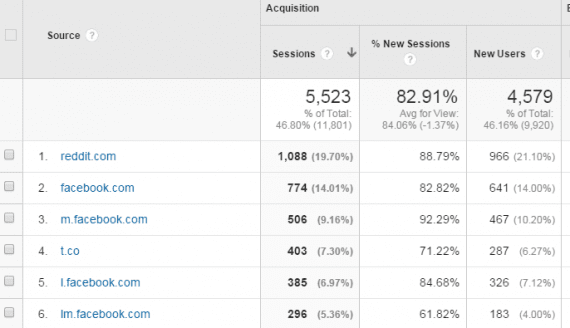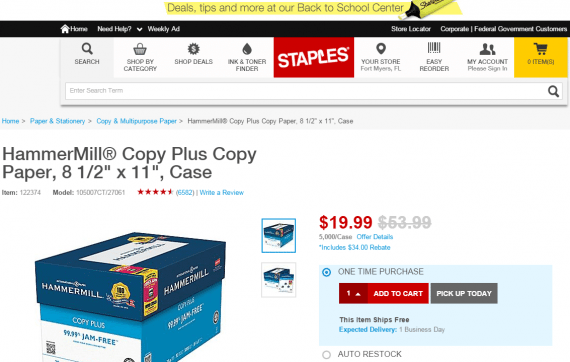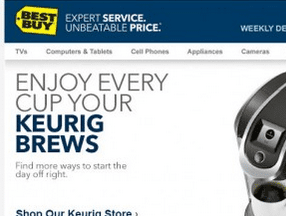The Internet is full of conversion rate studies. Many ecommerce merchants use this data as an indication of how much their online stores should be converting and generating in revenue. Unfortunately, it’s not that simple. In fact, there are so many factors that affect conversion rates that chances are you’re missing several of them.
Monetate released a quarterly report that shows the average add-to-cart, bounce, and conversion rates across ecommerce channels. The bulk of the data comes from big retailers, but it’s worth studying because it tells us not only rates for the U.S., U.K., and globally, it breaks them down by device.

Ecommerce conversion rates for five quarters. By region, the conversion rates range from 2.32 percent to 3.26 percent. By device, they range from .57 percent to 3.93 percent. Source: Monetate.
We know the common denominators of motivating shoppers to complete a purchase:
- Price;
- Shipping cost;
- Customer reviews;
- Ease of use (navigation, design, checkout flow);
- Guarantees (returns and exchanges allowed);
- Store credentials;
- Trust and authority.
There are plenty of other elements, including personalization.
Every website, one way or another, collects data. Analytics tells us a great deal, as do third-party tracking services. If you’re like many small business owners and managers, you have access to a great deal of data about your shoppers, and you may even study it. But do you actually use it to better the experience on a shopper-by-shopper basis?
Here are a few ways you can personalize one’s shopping visit and boost conversions.
Tailored Product Recommendations
Related products and “customers also bought” features are nice, but listing products based on demographics and traffic sources increases the chance of multi-product orders.
The easiest of these are traffic-source messages. Depending on where the visitor comes from — i.e., the referring URL — a customized message is displayed.

SaaS provider Algolia targets people who visit from Product Hunt.
How do you determine which messages to display and for which referring websites? This is typically determined by one or more of the following.
- Current advertising, marketing, and social media campaigns. If you’re highly active on Pinterest, but the majority of users there click to navigate shoes, you may want to display a message that directs them to that section. If you advertise on a user forum, present the product line showcased in the ads and messages.
- Which sites refer the most? Google Analytics will show you which websites send the most traffic your way. Customizing the experience can greatly increase add-to-carts and conversions.
- Which sites write about your business or spotlight a product? If you send products to bloggers to review, or if your store is mentioned in an online magazine, welcoming the visitors with a more personalized message helps with branding and sales.

When determining which social network users target on-site, run a Google Analytics’ report by navigating to Acquisition > Referrals. Then filter the results.
Guiding shoppers by their age and gender helps reduces bounce rates by taking them directly to products that may interest them. After all, you don’t really want to market pink yoga pants to a businessman (if he wants to buy those as a gift, you have to trust he’ll navigate to such items).
Treating Returning and New Shoppers Differently
Browser cookies tell the server if someone has shopped the store before. If your shopping cart supports it, the cookies may also log whether or not the returning shopper has previously placed an order. You can harness this data to present customized messages, login prompts (for returning customers), and even make special offers to help seal the deal.
Take it a step further in the checkout so you can opt to make login input fields prominent for repeat customers and less urgent for new ones.

New visitors most always outrank returning ones. Use custom content to help decrease bounce rates. Source: Google Analytics.
It’s important to note that some visitors marked as “new” are actually returning users who may have cleared out the cookies in the browser.
Location-based Targeting
Many think geo-targeting only applies to brick-and-mortar and service companies. By looking at a visitor’s location, you can display products and content based on weather, events, and area trends. In the winter months, a clothing store would want to promote coats and boots to Northern states, and lighter wear to Southerners. In the fall, a sporting goods store could target Florida visitors with fishing rods and New Yorkers with ski equipment. This is similar to how Staples asks for one’s zip code to display the right pricing, since it varies by market.

Staples displays different pricing based on one’s location.
These are a few ways you can personalize content. If your shopping cart doesn’t have ways for you to display content based on referring URLs or locations, there are many tools available to help. More advanced (and pricier) solutions are available to use a visitor’s behavior on the site to determine what is displayed.




